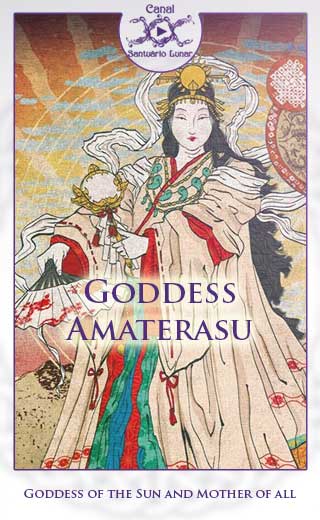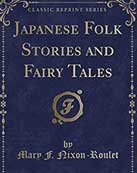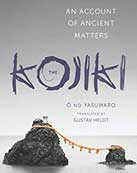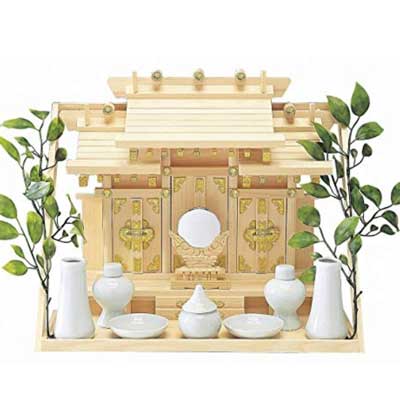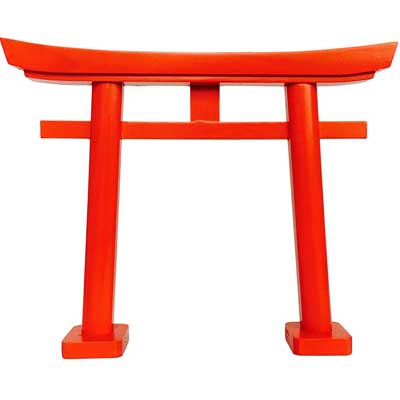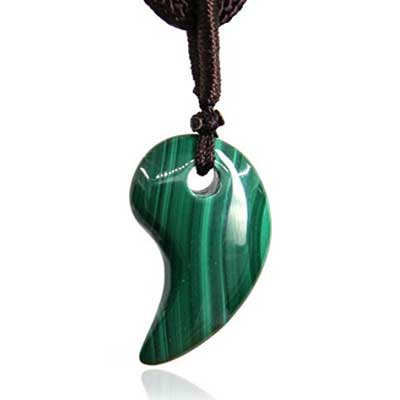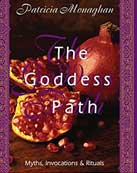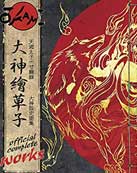Goddess Amaterasu is the Goddess of the Sun worshipped in Japan. Possessing the rising sun as a symbol, every morning she is greeted by the people through prayers. Amaterasu is one of the main Goddesses of Shinto. In Shinto the best denomination for Goddesses and Gods is “Kami”, it is common to see the name Amaterasu-ōmikami which means something close to “Great” Kami that illuminates the heavens.”
Goddess Amaterasu is described as a radiant and kind Goddess who brings light, joy, and prosperity to her people. She is the daughter of the divine creators of the world, Izanami and Izanagi, and she has two brothers: Tsukuyomi, the God of the Moon, and Susanoo, the God of Storms and seas.
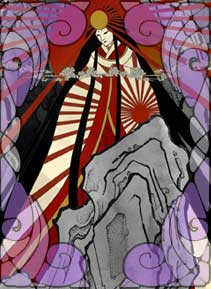
It is said that the first emperors of Japan were direct descendants of Amaterasu. Even her sacred sword (Kusanagi-no-Tsurugi), her jewel (Yasakani in the Magatama) and her mirror (Yata no Kagami), the goddess’s main symbol, are still guarded to this day as Imperial Treasures.
Watch a video below with the story of Amaterasu:
- Attributes: Goddess of the sun and the skies, agriculture and weaving
- Symbols: Raising sun, mirror, kites and arrows
- Place: Japan
Contents
Goddess Amaterasu – Mother Goddess of all
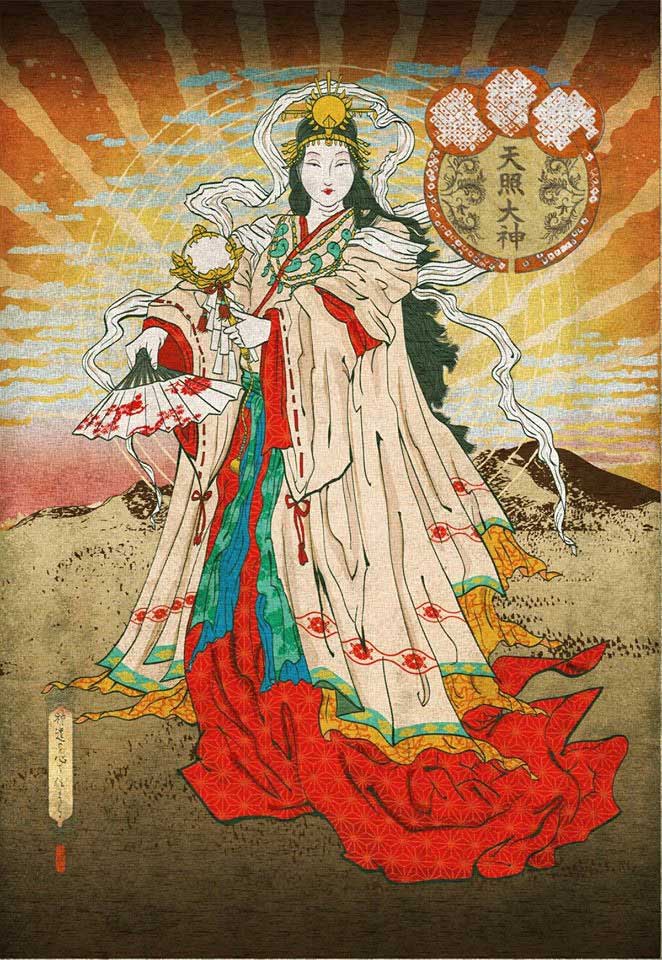
The main story involving Goddess Amaterasu Goddess tells when she hid in a cave due to sadness. According to Kojiki, the main book that tells the Shinto myth of creation, Susanoo caused many problems and, for that reason, he was expelled from the skies.
But among the problems he created, one particularly caused great discomfort to Amaterasu. Susanoo began to destroy rice fields and, in one of these destructions, he threw a dead horse in the weaving hall where the Goddess was, injuring her and killing one of her helpers.
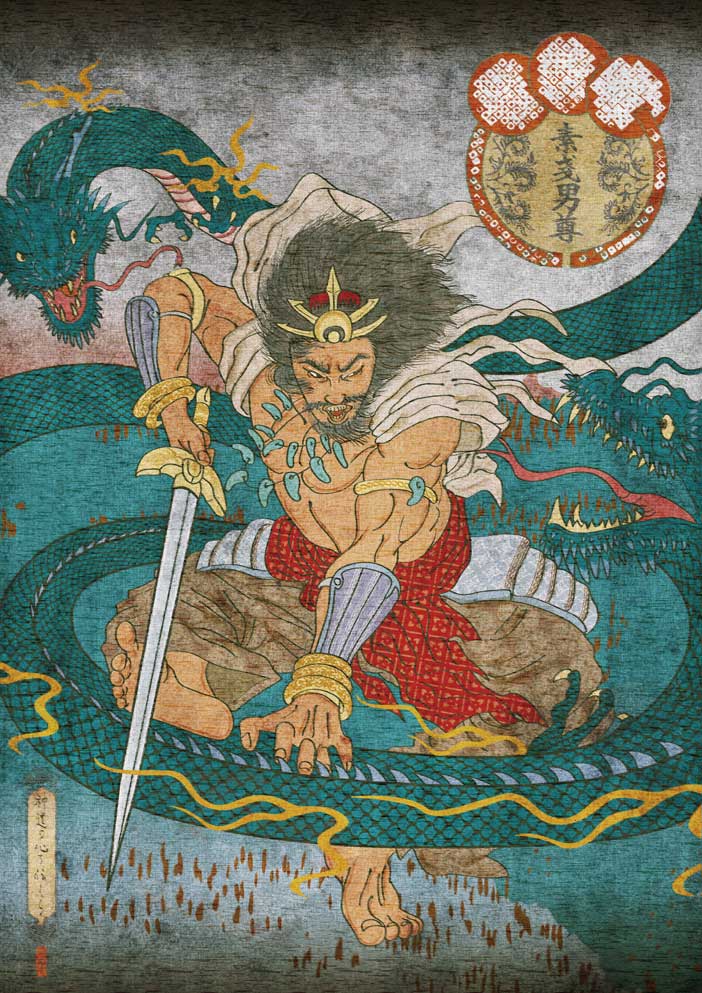
Saddened, Amaterasu hides in the cave “Ame-no-Iwato” and the whole world gets dark. The fields begin to die, the vegetation does not grow anymore, the cold takes over everything. Not even the Gods can reverse the situation.
No one can persuade Amaterasu to leave the cave. Fearing the eternal darkness, the God of Wisdom Omoikane has a great idea. The Gods organized a party at the entrance of the cave. A mirror was raised so Amaterasu could see her own reflection.
Goddess Uzume began to dance. She was so happy dancing that she ended up losing her clothes, exposing her breasts. She then says that the Gods have found another Goddess as beautiful and radiant as Amaterasu. Then she recites the verses:
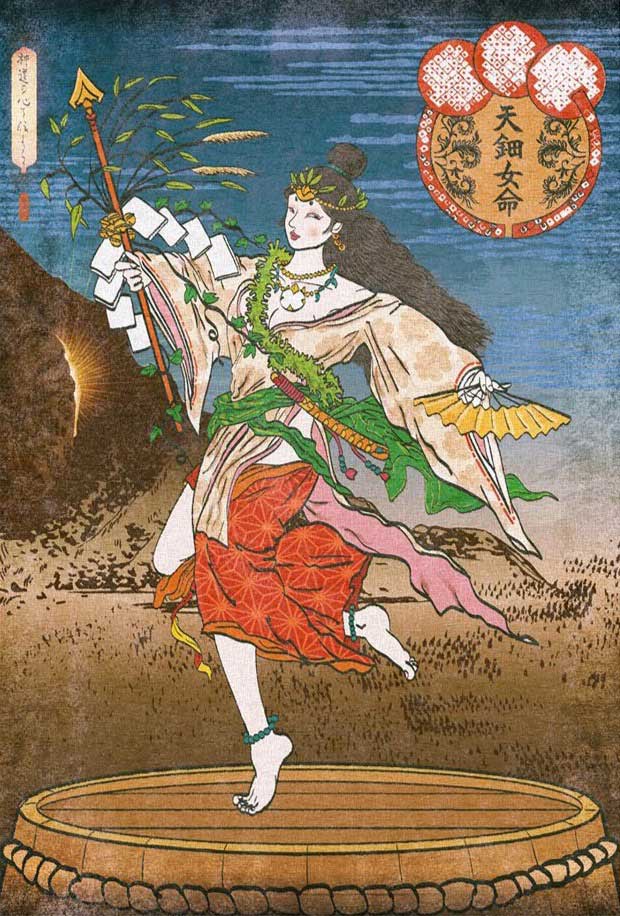
Hito futa miyo
Itsu muyu nana
Ya koko no tari
Momo chi yorodzu
Which means:
Gods, look at the entrance to the cave.
The Majesty appears! Rejoice!
Our hearts are happy
Look at my breasts and my limbs.
Listening to the noise and laughter of the other gods, Amaterasu decides to spy out of the cave. Seeing her image reflected in the mirror, and dazzled by her own beauty, Amaterasu emerges from the cave.
She was received with songs of praise and let herself be carried back to her golden palace, illuminating the world again.
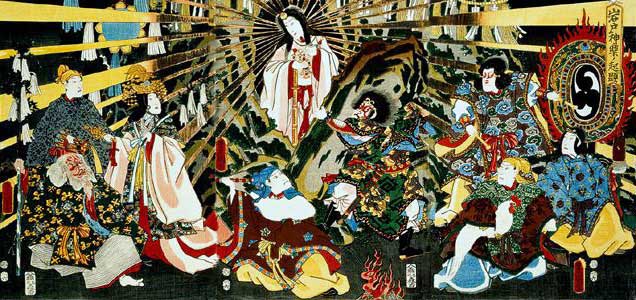
Goddess Amaterasu – Goddess of the Sun
Another important story involving the Goddess Amaterasu is found in the Nihon Shoki (Chronicles of Japan). In this chronicle, Amaterasu sends her brother Tsukuyomi to visit the Goddess of food Ukemochi.
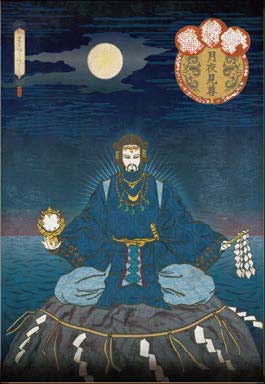
Tsukuyomi meets Ukemochi and she prepares a banquet for him, creating all her food through her mouth. Tsukuyomi finds everything very disgusting and kills Ukemochi, leaving Amaterasu deeply saddened.
Since then, Amaterasu and Tsukuyomi are no longer together, just like the Sun and the Moon.
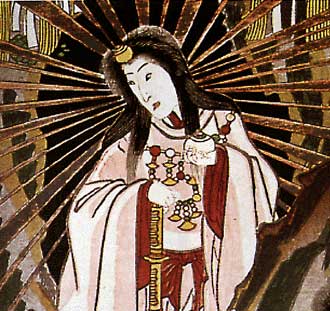
Shop Shinto related products! By using these links you collaborate with the site and do not pay anything extra for it!
Amaterasu and the women’s power
The myth of the Goddess Amaterasu emphasizes female power. The absence of the Goddess and the resulting aridity and darkness of the world demonstrate the importance of the woman, who must be respected, recognized and honoured as a source of life and energy.
By bringing her light back, all of Japan returns to thrive, as if it “gave birth” to Earth again.
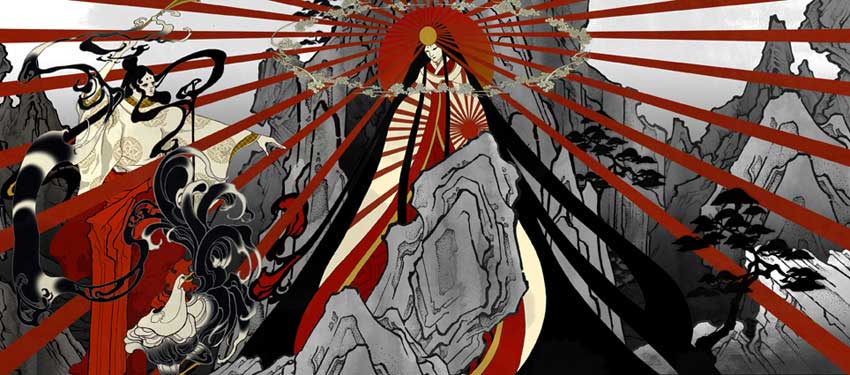
Goddess Amaterasu – Summoning
Amaterasu is everywhere through the sunlight. Even on cloudy days, she graced the earth with her warmth and kindness. There is no need to summon a Goddess who is already so present among us, but it is common to greet her at sunrise and reflect her light with a mirror through the rooms of the house letting her enter the rooms to bring peace, energy and life.
Another way of summoning the Goddess can be done at times when you wish advice from the Goddess. For being the Goddess of the Sun, Amaterasu can light up your mind and overshadow illusions that may be blocking your path. To do this ritual, first, take a mirror. It can be any mirror you have in your home or a mirror that you want to use especially for these occasions. Bow before the mirror, greeting the Goddess as the Japanese do. Then look into your own eyes and call Amaterasu eight times, the number of infinity. Concentrate and listen to the words of the Goddess.
This ritual is from the book “The Goddess Path” by Patricia Monaghan.
Reading tips: The Goddess Path by Patricia Monaghan. By using these links you collaborate with the site and do not pay anything extra for it!
Amaterasu in pop culture
The name Amaterasu is widely used in Japanese culture in Animes and manga. Several characters and spells have the name of the Goddess and they are usually related to the Sun or the fire element.
However, the biggest work to use Amaterasu’s name is the video game Okami where the Goddess, incarnated in a white wolf, is the great protagonist responsible for bringing the light back to Japan and restoring nature after the advance of darkness.
Okami is one of my favourite games ever! It’s a masterpiece! And the book containing the design is also amazing!
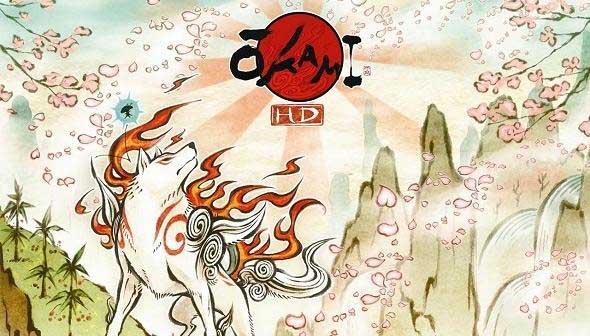
Read about other Shinto Goddesses
[su_posts template=”templates/list-loop.php” posts_per_page=”0″ tax_term=”1090″ order=”asc” orderby=”title”]
